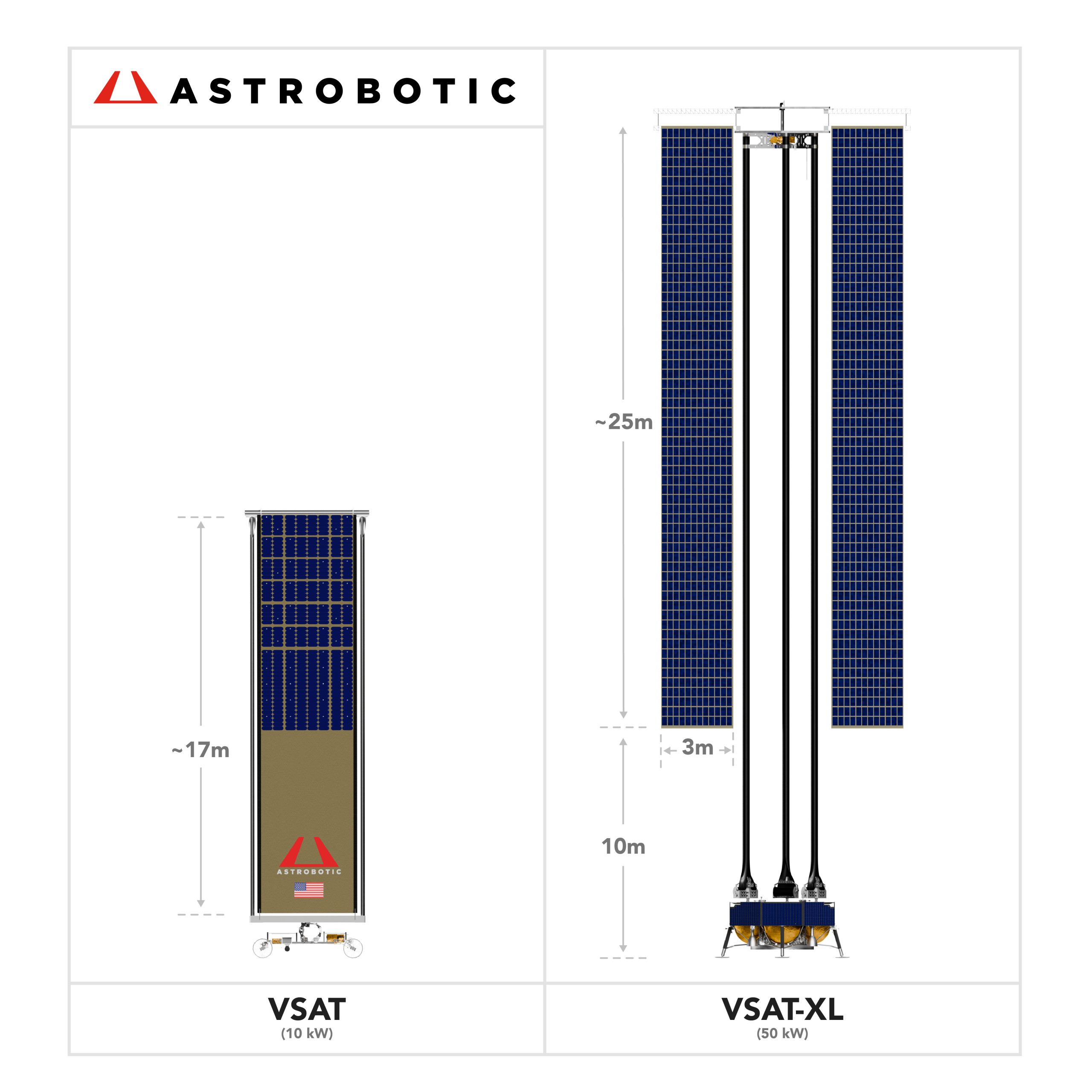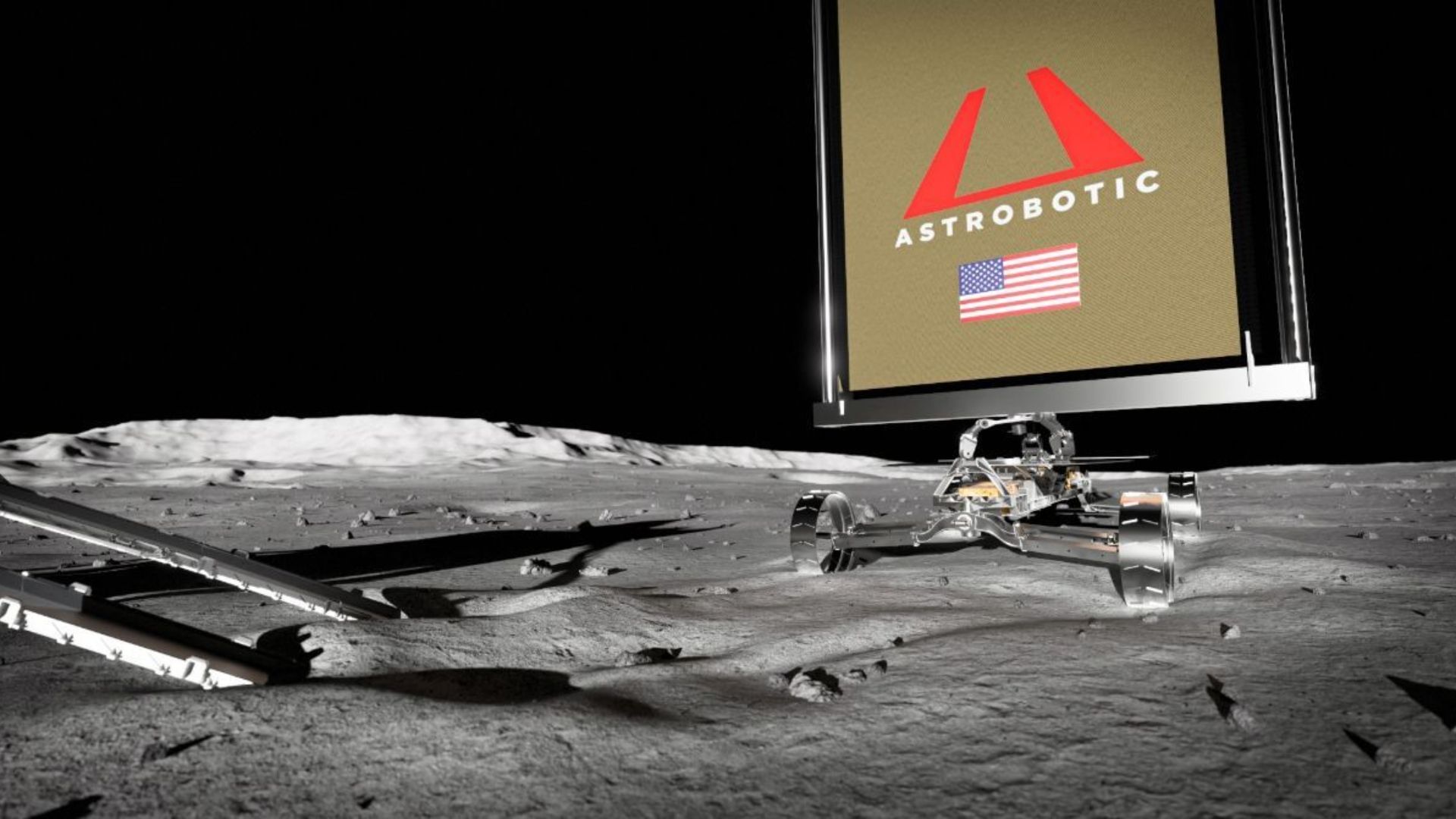New Delhi: Astrobotic has been awarded a contract by NASA to develop its Extra Large Vertical Solar Array Technology (VSAT-XL) towards building a power grid on the Moon. The solar arrays can tower over 30 m tall with 20 m long solar panels, generating 50 kW of power. The solar arrays can stand without toppling because of the lack of a dense atmosphere and weather system on the Moon as well as its low gravity. These solar arrays can provide power to hardware that reaches the lunar surface, that will benefit from not having to carry their own power source. Astrobotic has previously been developing a lunar power grid with smaller arrays, as part of its 10 kW VSAT system.

Astrobotic’s planned XL solar array for use on the Moon. (Image Credit: Astrobotic).
Astrobotic has supersized its smaller concept, with a self-leveling solar-powered system that is deployable and can track the slow movement of the Sun across the skies of the Moon for optimising the energy capture. The solar array ‘blankets’ are deployable and retractable, and can be raised 10 m above the lunar terrain. The solar panels are being designed for placement around the south pole of the Moon, where the Sun circles around the horizon at a low angle throughout the year. The arrays are designed to be mounted on top of Astrobotic’s Griffin lander, and will be a part of the LunaGrid system.
LunaGrid enables long-term presence on the Moon
Astrobotic’s CEO John Thornton says, “As lunar surface missions continue to grow in scale and scope, the ability to generate, store, and distribute large amounts of power will become critical. A system like VSAT-XL has the power capacity to support in-situ resource utilization infrastructure and long-term habitats, which could unlock a whole new class of science and exploration missions that would not be possible before.” The LunaGrid system can power missions to the surface for months to years, enabling sustained human presence on the lunar surface. The same system can also be deployed on other planetary surfaces, including Mars.
